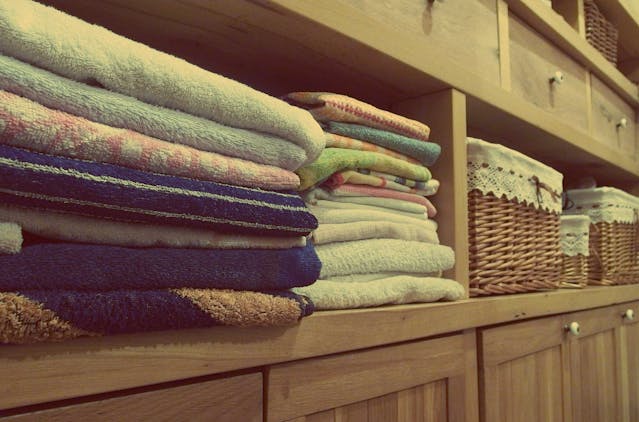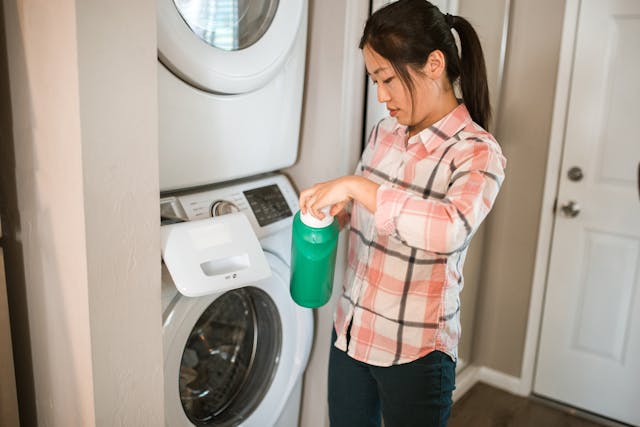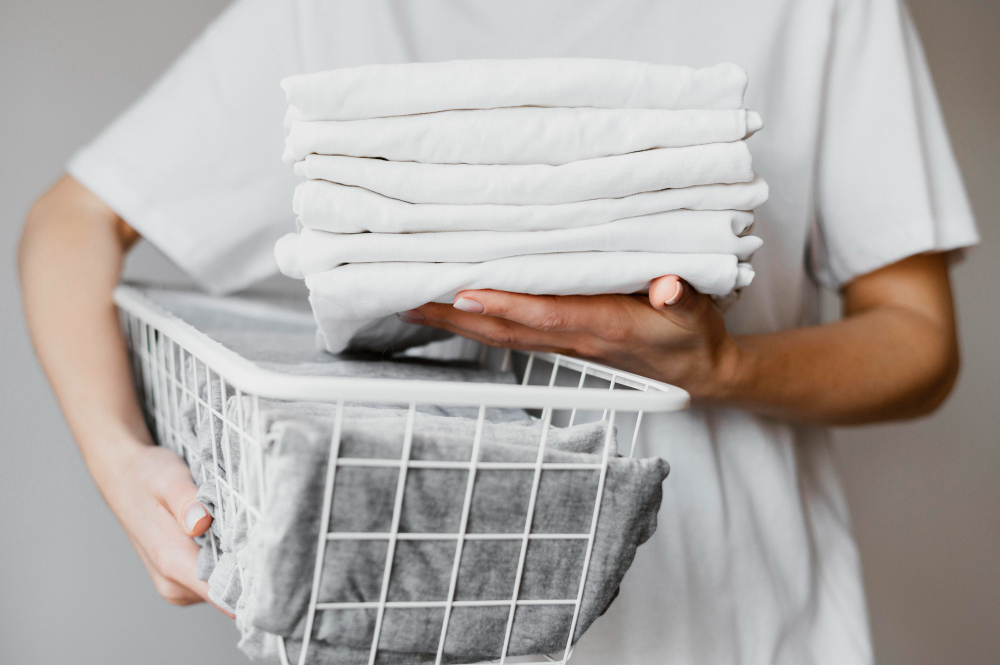When it comes to saving money and being environmentally friendly, many people turn to homemade solutions. One popular DIY project that has gained traction in recent years is homemade laundry soap.
While the idea of making your own laundry soap may seem appealing at first glance, there are several reasons why homemade laundry soap is bad for both your clothes and your washing machine.
In this blog post, we will delve into the potential pitfalls of homemade laundry soap and why it may not be the best choice for your laundry needs.
Potential for Ineffective Cleaning
Homemade laundry soap often fails to match the cleaning power of commercially produced detergents. This lack of efficacy primarily stems from its basic components, soap flakes, borax, and washing soda. While these ingredients may clean under certain conditions, they struggle with removing stubborn stains and deeply embedded odors.
Unlike commercial detergents, which are designed and tested to handle a wide range of cleaning challenges, homemade mixtures do not undergo the same level of scrutiny or quality control. Consequently, users might find themselves running additional wash cycles in an attempt to achieve the desired cleanliness, leading to unnecessary consumption of water and energy.
This not only negates any perceived environmental benefits but also contributes to higher utility bills, undermining the efficiency and eco-friendliness of using homemade laundry soap.
Damage to Laundry Machines
Homemade laundry soap’s composition poses significant risks to washing machines. The formulation, often including soap flakes and washing soda, can lead to the accumulation of soap scum within the machine’s internal systems. This accumulation can obstruct hoses and drains, severely impairing the machine’s functionality and efficiency.
Over time, these blockages can necessitate expensive repairs or even complete replacements. Furthermore, the improper pH balance commonly found in these DIY soaps can cause corrosion to the metal components of washing machines.
This corrosion process can gradually degrade the machine, reducing its operational lifespan and contributing to the need for premature machinery replacement. As such, while the initial switch to homemade laundry soap may seem advantageous, the long-term effects on laundry equipment reveal a different story, highlighting the unforeseen costs and maintenance challenges associated with its use.
Environmental Considerations
The perception of homemade laundry soap as an eco-friendly alternative to commercial detergents is a common misconception. Many assume that its basic, often natural, ingredients translate to a smaller environmental footprint. However, the environmental impact of homemade laundry soap is not as benign as it appears.
The key components, such as borax and washing soda, despite their natural origins, require significant energy and resources for their extraction and production processes.
These processes can contribute to habitat destruction, water pollution, and increased carbon emissions, undermining the ecological benefits of a homemade solution.
Moreover, the absence of regulatory oversight means there’s no guarantee that homemade laundry soap formulas are safe for aquatic ecosystems. Ingredients that are seemingly harmless can, in fact, pose a threat to waterways and marine life once they enter the sewage system. Unlike commercial products, which are subject to environmental regulations and testing to minimize their ecological impact, homemade soaps can contain components that disrupt aquatic ecosystems, affecting both plant and animal life.
Additionally, the efficacy issues of homemade laundry soaps might lead to the use of excess water and energy to achieve the desired level of cleanliness.
This increased consumption not only counteracts any purported environmental advantages but also contributes to a larger carbon footprint associated with laundry activities.
Thus, when considering the broader environmental implications, homemade laundry soap may not be the green solution it’s often believed to be.
Health Risks from Improper Formulations
One of the critical drawbacks of homemade laundry soap lies in the health hazards posed by its ingredients and their formulations. Many DIY laundry soap recipes incorporate substances like borax, which, despite its cleaning efficacy, can pose significant health risks if mishandled.
Exposure to such ingredients, whether through direct contact with the skin during the preparation process or through residues left on clothing, can lead to irritation, allergic reactions, or more severe health issues. The lack of professional manufacturing and quality control measures exacerbates these risks, as individuals may not accurately gauge the safety and appropriate concentrations of each component.
This scenario becomes particularly concerning in households with young children or pets, who are more vulnerable to accidental ingestion or contact with these substances. Unlike professionally formulated products, which undergo rigorous safety evaluations and adhere to regulatory standards to ensure they pose minimal risk to consumers, homemade concoctions lack this level of scrutiny and assurance.
This oversight can inadvertently put users at risk, highlighting the importance of carefully considering the potential health implications of opting for homemade laundry soap solutions.
The Financial Illusion of Savings
At first glance, crafting your own laundry soap might seem like a savvy financial move. The initial costs appear low, especially when you compare the price of individual ingredients to the cost of high-end detergents. However, this perspective fails to account for the broader picture.
The components needed for homemade laundry soap, while seemingly economical, can add up, especially if sourcing higher-quality or organic alternatives.
Moreover, the inefficacy of homemade concoctions often necessitates multiple washing cycles to achieve the same level of cleanliness provided by one cycle of commercial detergent. This not only increases water and energy usage but also elevates utility bills, diminishing the supposed cost-effectiveness.
In addition to the direct costs associated with ingredients and increased utility use, there are indirect financial implications to consider. The potential for homemade laundry soap to damage clothing and washing machines can lead to expensive repairs or replacements far sooner than might be expected with commercial products.
These unforeseen expenses can quickly offset any immediate savings, making the homemade route less economical over time. Ultimately, when evaluating the total costs, both direct and indirect, associated with homemade laundry soap, the anticipated savings can quickly evaporate, revealing a financial reality that contradicts the initial promise of frugality.



0 Comments